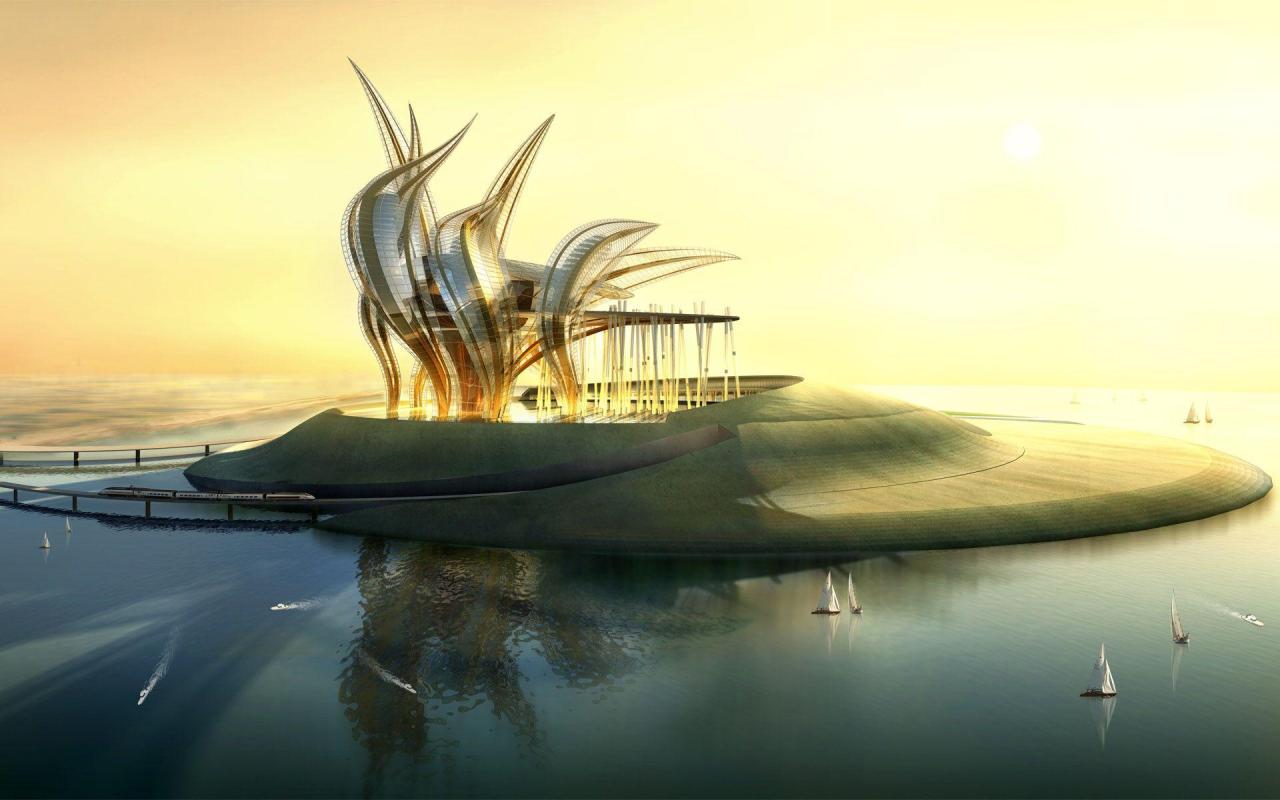Unique Dining Experiences At Luxury Hotels Worldwide
Unique dining experiences at luxury hotels worldwide sets the stage for this enthralling narrative, offering a glimpse into a world where gastronomy transcends mere sustenance to become an art form. Exceptional dining is not just about what is eaten; it’s an intricate tapestry woven from exquisite locations, innovative culinary trends, and cultural nuances that leave a lasting impression on guests. From rooftop restaurants with panoramic views to themed dining that transports patrons to another time and place, luxury hotels curate unforgettable moments that cater to all senses.
As we explore the various dimensions of these unique experiences, we will uncover how local ingredients and culinary innovations are reshaping menus, while exclusive dining events create an aura of sophistication. The integration of health and wellness into dining options reflects a modern commitment to guest well-being, enhancing the overall allure. Join us as we delve into the fascinating world of luxury hotel dining, where every meal is a celebration of creativity and craftsmanship.
Introduction to Unique Dining Experiences

Dining experiences at luxury hotels are not just about nourishment; they embody an art form that combines culinary excellence, aesthetic presentation, and immersive environments. In a world where gastronomic trends constantly evolve, luxury hotels are redefining the dining landscape, offering guests a blend of flavors, cultures, and innovative concepts that stimulate the senses and create lasting memories.
A unique dining experience transcends the traditional meal structure by incorporating elements such as an exclusive menu curated by renowned chefs, a captivating ambiance, and personalized service. These experiences often feature a sensory journey where each dish tells a story, reflecting local ingredients, cultural heritage, and avant-garde cooking techniques. The setting itself plays a crucial role, whether it’s a rooftop overlooking a breathtaking skyline, an underground wine cellar, or a serene beachfront terrace.
Factors Elevating Dining Beyond Mere Meals
Several key factors contribute to the unique dining experiences offered by luxury hotels, enhancing the appeal and allure of their culinary offerings. Understanding these elements can provide insights into why guests are drawn to these extraordinary settings:
- Chef’s Expertise: Renowned chefs bring their unique culinary philosophies and techniques to the table, often highlighting their signature dishes and specialties. For example, a Michelin-starred chef might create a tasting menu that showcases seasonal ingredients, elevating the dining experience through their expert craftsmanship.
- Location and Ambiance: The setting is paramount. Imagine dining on a terrace surrounded by vineyards in Tuscany or an underwater restaurant amid vibrant marine life. These locations create an immersive backdrop that enhances the meal’s enjoyment.
- Personalization: Tailored experiences, including customized menus catering to dietary preferences, dietary restrictions, or special occasions, ensure that guests feel valued and cherished. This personal touch can transform a dining occasion into a memorable celebration.
- Pairing with Fine Wines: Expertly curated wine pairings can elevate each course, enhancing flavors and enriching the overall experience. Luxury hotels often employ sommeliers to guide guests through this aspect, ensuring a harmonious balance between food and drink.
- Cultural Engagement: Many luxury hotel dining experiences incorporate local culinary traditions, allowing guests to connect with the culture through flavors and techniques. This can include interactive cooking classes or themed dining events showcasing regional cuisines.
“A meal should be a journey, not a destination.”
This approach not only satisfies hunger but also fosters an appreciation for culinary artistry, making dining at luxury hotels a truly unique experience.
Culinary Trends in Luxury Hotels
In an ever-evolving gastronomic landscape, luxury hotels are at the forefront of culinary innovation, embracing trends that captivate the palates of discerning travelers. The intersection of local sourcing, sustainability, and cutting-edge techniques shapes the dining experiences these establishments offer. From immersive dining concepts to the revitalization of traditional cuisines, the current culinary trends reflect a deepened commitment to quality and creativity.
The impact of local and seasonal ingredients has never been more pronounced in high-end dining. Chefs are increasingly turning to nearby farms and markets to source fresh produce, meats, and artisanal products, thus enhancing the authenticity of their menus while supporting local economies. This approach not only ensures peak flavor but also minimizes the carbon footprint associated with food transport. Seasonal menus, often changing with the harvest, allow for a dynamic dining experience that aligns with the rhythms of nature.
Emphasis on Local and Seasonal Ingredients
The integration of local and seasonal ingredients into luxury hotel dining reflects a growing trend towards sustainability and quality. This commitment fosters a connection between diners and the culinary landscape of the region, enhancing the overall experience.
- Farm-to-Table Philosophy: Many luxury hotels have adopted a farm-to-table philosophy, where chefs collaborate with local farms to secure the freshest ingredients. This practice not only ensures high-quality offerings but also supports local agriculture.
- Seasonal Menus: Changing menus based on seasonal produce allows chefs to showcase the best ingredients available at different times of the year. This results in dishes that are not only fresh but also varied and exciting.
- Preservation Techniques: Chefs are employing traditional preservation techniques, such as pickling and fermenting, to enhance flavors and extend the use of seasonal ingredients throughout the year.
Gastronomic Innovation in Unique Dining Experiences
Gastronomic innovation is redefining what it means to dine in luxury. Chefs are experimenting with avant-garde techniques and presentations, transforming meals into multisensory experiences that engage all the senses.
- Experimental Cooking Techniques: Techniques such as sous-vide, molecular gastronomy, and smoke infusion are becoming staples in luxury kitchens. These methods allow chefs to push the boundaries of flavor and texture, creating dishes that surprise and delight.
- Interactive Dining: Many luxury hotels are incorporating interactive dining experiences where guests participate in the preparation of their meals. This engagement fosters a deeper appreciation for the culinary process and enhances the overall dining experience.
- Cross-Cultural Inspirations: Chefs are blending culinary traditions from various cultures, creating unique fusions that reflect global influences. This trend not only broadens the flavor profile of dishes but also tells a story through food.
“By embracing local ingredients and innovative techniques, luxury hotels are not just serving meals; they are crafting unforgettable dining tales.”
Thematic Dining Concepts
Thematic dining experiences in luxury hotels create immersive culinary adventures that engage all senses. By integrating various themes into their dining offerings, these hotels provide guests not just with a meal, but with a memorable experience that resonates on multiple levels. Themed dining enhances the overall atmosphere, elevating meals into stories that guests can connect with emotionally and culturally.
Themes can transform a meal into an event, allowing diners to escape the ordinary. They can evoke nostalgia, celebrate local traditions, or transport guests to different eras or places. The right theme can significantly enhance the guest experience by making dining more interactive and unique. Below are examples of some thematic dining concepts successfully implemented in luxury hotels worldwide.
Examples of Thematic Dining Experiences
Numerous luxury hotels have embraced thematic dining to captivate their guests. Below is a list showcasing a variety of these innovative concepts:
- Under the Stars: Some resorts offer alfresco dining experiences where guests dine beneath a canopy of stars, often paired with astronomy-themed menus and expert guides.
- Farm-to-Table: This concept focuses on local ingredients, allowing guests to experience the flavors of the region while promoting sustainability and supporting local farmers.
- Cultural Festivals: Luxury hotels may host feasts based on cultural celebrations like Diwali, Chinese New Year, or Oktoberfest, showcasing traditional dishes and entertainment relevant to the theme.
- Historical Journeys: Restaurants that recreate historical dining experiences, such as a Renaissance banquet or a Victorian tea party, allow guests to experience meals from different eras.
- Interactive Cooking Classes: Some hotels invite guests to cook their meals alongside professional chefs, enhancing the dining experience by making it both educational and engaging.
- Literary Dinners: Inspired by classic novels or famous authors, these themed dinners feature menus and decor that reflect specific literary works, creating a narrative around each meal.
Successful implementation of these themed concepts can be seen in various luxury hotel restaurants around the globe. For example, the
The Ritz-Carlton, Dubai
hosts a monthly “Under the Stars” dinner, where guests can enjoy a five-course meal while gazing at the night sky, complete with stargazing guides.
Another notable example is the
Four Seasons Hotel, Hong Kong
, which has embraced the farm-to-table movement, allowing guests to indulge in dishes made exclusively from ingredients sourced within a 100-mile radius.
Through these immersive experiences, luxury hotels not only satisfy diners’ appetites but also their desire for unique and memorable experiences, proving that the right theme can turn a simple meal into a remarkable journey.
Unique Locations for Dining

Dining in luxury hotels transcends mere sustenance; it evolves into an experience where the location plays a crucial role in shaping the ambiance and enjoyment of the meal. Unique dining settings within luxury hotels not only captivate the senses but also create unforgettable memories that linger long after the last bite. From breathtaking views atop skyscrapers to serene underwater environments, the locations of these dining experiences enhance the culinary journey, making each meal a celebration of both flavor and setting.
One of the most remarkable aspects of fine dining in luxury hotels is the creativity involved in selecting unusual locations. These establishments often leverage their unique geographical features to offer guests something extraordinary. Dining experiences are crafted not only around exquisite menus but also around the stunning backdrops that enhance the overall atmosphere. Here, we explore some of the most distinctive dining locations found in luxury hotels around the world.
Dining on Rooftops
Rooftop dining has become a symbol of luxury and exclusivity, providing stunning panoramic views that elevate the dining experience. Guests are treated to a feast for the eyes alongside their meal, making it an integral part of the enjoyment. Many luxury hotels have capitalized on this trend, transforming their rooftops into culinary havens.
- Ozone at The Ritz-Carlton, Hong Kong: Set on the 118th floor, Ozone offers breathtaking views of Victoria Harbour, paired with an innovative Asian menu that emphasizes fresh ingredients and bold flavors. The modern decor and sophisticated atmosphere complement the exquisite dining experience.
- Sky Bar at Lebua State Tower, Bangkok: Renowned for its stunning views of the Chao Phraya River, Sky Bar offers a luxurious setting for enjoying signature cocktails and international cuisine. The open-air design allows diners to bask in the vibrant city skyline as they savor their meals.
- SEVEN at The Hilton, Tokyo: Located on the 34th floor, SEVEN provides a unique blend of Japanese and Western culinary traditions. Guests can enjoy sushi and sashimi while overlooking the iconic Tokyo Tower, creating a memorable fusion of flavors and sights.
Underwater Dining
Underwater dining experiences offer an unparalleled way to connect with the ocean’s beauty while enjoying gourmet cuisine. These unique settings not only provide a one-of-a-kind ambiance but also allow diners to immerse themselves in a surreal underwater world.
- Subsix at Niyama Private Islands, Maldives: This stunning underwater nightclub and restaurant is located six meters below the surface. Diners can indulge in a multi-course meal surrounded by vibrant marine life, creating an extraordinary dining experience that feels like a scene from a fantasy.
- Underwater Restaurant at The Conrad Maldives Rangali Island: This iconic venue offers a dining experience submerged beneath the waves, allowing guests to enjoy an exquisite meal while watching the rich underwater ecosystem. The ambiance is both magical and serene, enhancing the flavors of the fresh seafood dishes.
- Poseidon Undersea Resort, Fiji: With its underwater dining facility, this resort offers guests a chance to enjoy a meal surrounded by glass walls that provide unobstructed views of the ocean’s wonders. The combination of luxury dining and the natural beauty of the ocean creates an unforgettable experience.
The ambiance of these unique dining locations significantly influences the overall experience. A breathtaking view or an enchanting underwater setting not only enhances the meal but also elevates the emotional connection diners feel towards their dining experience. As luxury hotels continue to innovate and explore new frontiers in dining experiences, the importance of location will remain a vital aspect of the culinary journey.
Integrating Culture and Cuisine
Luxury hotels around the world have recognized the significance of infusing local culture into their dining experiences. By seamlessly blending traditional culinary practices with modern gastronomy, these establishments not only provide exquisite meals but also create a vibrant tapestry of local heritage. This integration not only enhances the dining experience but also allows guests to engage with the destination on a deeper level, fostering a greater appreciation for the locale.
One of the primary methods luxury hotels use to incorporate local culture into their dining experiences is through the careful selection of ingredients and cooking techniques that reflect regional traditions. Chefs often collaborate with local farmers and suppliers to source seasonal produce, ensuring freshness and authenticity. Additionally, menus frequently feature signature dishes that are emblematic of the local cuisine, showcasing time-honored recipes that tell a story of the area’s cultural heritage.
Presenting Cultural Influences Through Menus and Decor
The presentation of cultural influences is a pivotal aspect in enhancing the overall dining experience. Luxury hotels employ various techniques to ensure that the ambiance, decor, and menu align with local traditions. This creates a cohesive and immersive experience for diners.
Some effective methods include:
- Artisan Tableware: Utilizing handcrafted plates, utensils, and glassware that reflect local craftsmanship elevates each meal while providing guests with a tangible connection to the culture.
- Thematic Decor: Restaurants might incorporate local art, textiles, and decorative elements that resonate with the area’s history and aesthetics, creating an inviting atmosphere that celebrates local culture.
- Cultural Performances: Some luxury hotels host live performances such as traditional music or dance during dining experiences, enriching the atmosphere and enhancing the guests’ understanding of the local arts.
- Interactive Cooking Classes: Offering guests the opportunity to engage in cooking sessions where they learn about local ingredients and cooking methods encourages cultural exchange and appreciation.
By focusing on these elements, luxury hotels not only create memorable dining experiences but also foster cultural representation. This is vital in a global hospitality landscape where guests seek authentic experiences that connect them to the locations they visit.
Incorporating cultural elements into luxury hotel dining is not merely a trend but a necessary practice that enriches guest experiences, promotes local economies, and preserves culinary heritage. By celebrating local traditions through food, hotels create a unique offering that distinguishes them in a competitive market.
Exclusive Dining Events
Exclusive dining events offer a unique opportunity for culinary enthusiasts to engage with the art of gourmet dining in an intimate setting. Luxury hotels around the world have recognized the desire for exclusive experiences and curate events that not only elevate the dining experience but also create lasting memories. These events often feature renowned chefs, specialty menus, and an ambiance that transports guests to another world.
Luxury hotels host a variety of exclusive events that showcase their culinary prowess and commitment to exceptional service. These events often include private dining experiences, chef’s tables, and themed culinary nights that highlight specific cuisines or culinary techniques. The sense of exclusivity associated with these events is paramount, as they provide a unique space for guests to enjoy fine dining away from the typical restaurant environment.
List of Exclusive Dining Events, Unique dining experiences at luxury hotels worldwide
The following is a list of remarkable exclusive dining events offered by some of the world’s most luxurious hotels:
- Chef’s Table Experience at The Dorchester, London: Guests enjoy a personalized tasting menu crafted by the head chef in a private dining room, complete with wine pairings and behind-the-scenes insights into the culinary process.
- Wine and Dine Evenings at The Ritz-Carlton, Napa Valley: These events pair exquisite dishes with rare wines from local vineyards, led by an expert sommelier who guides guests through the tasting notes and origins.
- Destination Dining at Aman Tokyo, Japan: This unique experience allows guests to dine in a serene setting overlooking the city, featuring seasonal Japanese cuisine that celebrates the flavors of the region.
- Culinary Masterclasses at Four Seasons Resort Bali: Guests participate in hands-on cooking classes with expert chefs, culminating in a private dinner featuring the dishes they’ve created together.
- Themed Gala Dinners at The St. Regis New York: These exclusive events feature elaborate themes, where each course is inspired by a particular culture or historical event, paired with live entertainment.
Each of these events not only presents an opportunity to savor exquisite dishes but also fosters an environment of exclusivity and personal connection. Guests often engage directly with chefs, learn about the intricacies of the dishes, and enjoy a curated experience that is tailored just for them. This element of interaction enhances the overall dining experience and imbues it with a sense of importance and uniqueness.
“Exclusive dining events transform a meal into an occasion, creating unforgettable moments that linger long after the last bite.”
Private dining experiences and chef’s tables further amplify the exclusivity of luxury hotel dining. These offerings allow guests to enjoy bespoke service in a secluded environment, often with menus crafted specifically to their tastes and preferences. The intimate setting and personalized attention heighten the overall experience, making these dining events truly special. As a result, exclusive dining events continue to be a hallmark of luxury, attracting those who seek not just a meal, but an extraordinary culinary journey.
Health and Wellness in Dining
As the landscape of luxury dining evolves, a significant trend has emerged: health-conscious dining. Luxury hotels are increasingly integrating wellness into their culinary offerings, recognizing that today’s discerning diners seek not only exquisite tastes but also nutritious options that contribute to their overall well-being. This shift reflects a broader societal focus on health, sustainability, and conscious living, marking a new era in fine dining experiences.
Luxury hotels are now curating menus that emphasize fresh, organic, and locally sourced ingredients. These wellness-focused dining options often highlight plant-based dishes, superfoods, and nutrient-dense offerings designed to nourish the body without compromising on flavor or presentation. The integration of nutrition into luxury dining experiences enhances the appeal of these establishments, allowing guests to indulge guilt-free.
Examples of Wellness-Focused Menus and Dining Options
Across luxury hotels worldwide, several establishments are leading the way in health-conscious dining. These menus often feature innovative dishes that prioritize both taste and health, catering to a variety of dietary preferences and restrictions.
- The Ritz-Carlton, Los Angeles: The hotel’s ‘Wellness Menu’ includes dishes like quinoa-stuffed bell peppers and turmeric-infused smoothies, focusing on anti-inflammatory properties and energy-boosting ingredients.
- Four Seasons Hotel, Sydney: The ‘Nourish’ menu emphasizes seasonal produce, offering items such as grilled fish with a side of sautéed greens and a vibrant beetroot salad, promoting gut health and vitality.
- Mandarin Oriental, Bangkok: Their ‘Wellness Cuisine’ features dishes crafted from organic ingredients, including a detoxifying soup made with spirulina and fresh herbs, designed to cleanse and rejuvenate.
The emphasis on health and wellness in dining is not merely a trend; it is a crucial component of the luxury hotel experience. By offering these thoughtfully crafted menus, hotels attract a clientele that values both indulgence and well-being, thus redefining the luxury dining experience.
Integration of Nutrition and Luxury in Dining Experiences
The luxury dining experience is now synonymous with a commitment to health and wellness. This integration manifests in various ways, from the selection of ingredients to the presentation of the dishes. Many luxury hotels are partnering with nutritionists and chefs to develop meals that cater to health-conscious guests while still providing the opulence expected in high-end dining.
“Luxury dining is now about enhancing wellness through food, where each dish tells a story of health and indulgence.”
The trend towards integrating nutrition into luxury dining can be highlighted through several key practices:
- Customized Nutrition Plans: Hotels often offer personalized meal plans designed by certified nutritionists to meet individual dietary needs.
- Sustainable Sourcing: Emphasis on farm-to-table practices ensures that ingredients are not only fresh but also environmentally responsible.
- Mindful Eating Experiences: Some luxury hotels provide guided dining experiences that focus on the mindfulness of tasting and appreciating each dish, fostering a deeper connection with food.
In conclusion, the evolution of health and wellness in dining within luxury hotels reflects a significant cultural shift towards healthier lifestyles. This trend is likely to continue shaping the culinary landscape as guests seek experiences that nourish both body and soul.
Innovations in Service and Presentation: Unique Dining Experiences At Luxury Hotels Worldwide
In the realm of luxury hotel dining, service and presentation are paramount to creating an unforgettable experience. As culinary trends evolve, so too do the methods by which dishes are served and presented, leading to exceptional and memorable dining encounters. Luxury hotels are adopting innovative service techniques and unique presentation styles that not only enhance the aesthetic appeal of the meal but also elevate guest satisfaction.
One significant area of innovation lies in service methods that redefine the dining experience. Luxury hotels are embracing technology and personalized service to ensure that every guest’s needs are met with precision and care.
Innovative Service Methods
Incorporating technology into dining service has become increasingly popular, with many luxury hotels utilizing various tools to enhance the experience. Here are innovative service methods that are transforming dining in high-end establishments:
- Table-side Preparation: Chefs often prepare dishes at the table, such as flambé desserts or freshly carved meats, allowing guests to engage with the culinary process directly.
- Digital Menus and Ordering Systems: Many hotels have adopted tablet-based menus, enabling guests to view detailed descriptions, images, and even nutritional information at their fingertips.
- Personalized Service Robots: Some luxury hotels have employed service robots to deliver food and beverages, ensuring quicker service and a novel experience for guests.
- Multi-Sensory Experiences: Some establishments incorporate sound, scent, and visual elements that complement the meal, enhancing the overall sensory experience.
These methods not only streamline the dining process but also create a unique connection between guests and their meals, fostering a deeper appreciation for the culinary arts.
Unique Presentation Styles
Presentation plays a critical role in the dining experience, and luxury hotels are continually experimenting with artistic displays that engage guests visually. The following presentation styles have gained popularity for their creativity and elegance:
- Deconstructed Dishes: Chefs present components of a dish separately, allowing guests to appreciate each element and its flavor profile before combining them as they wish.
- Interactive Plating: Guests may be invited to assemble their dish, encouraging engagement and personalization in their dining experience.
- Artistic Plating Techniques: Using sauces and garnishes to create visual art on the plate not only makes the meal more appealing but also enhances anticipation.
- Nature-Inspired Presentations: Inspired by nature, some chefs use elements like edible flowers, unique stones, or wooden boards to present dishes, creating an organic feel.
Such innovative presentation styles not only tantalize the taste buds but also captivate the eyes, making each meal a feast for all senses.
Impact of Service Innovation on Guest Satisfaction
The introduction of innovative service methods and unique presentation styles significantly influences guest satisfaction levels in luxury dining. By offering personalized and memorable experiences, hotels can create lasting impressions that lead to repeat visits and commendations.
“Guest satisfaction in luxury dining is largely driven by the quality of service and the creativity of the presentation. Innovations in these areas can elevate a standard meal to an unforgettable experience.”
Notable examples include The Ritz-Carlton, where table-side preparation of signature dishes enhances the dining experience, and Mandarin Oriental, which employs technology for personalized menu selections, ensuring memorable meals tailored to individual preferences. These innovations not only satisfy the palate but also leave a lasting mark on the guest’s overall experience, reinforcing the brand’s commitment to excellence in dining.
Sustainable Practices in Luxury Dining
In recent years, sustainability has become a core pillar of luxury dining experiences at hotels worldwide. As the hospitality industry evolves, luxury hotels are increasingly incorporating eco-friendly practices into their dining operations, recognizing the importance of environmental responsibility alongside high-quality cuisine. This shift not only enhances the dining experience but also aligns with the values of discerning guests who prioritize sustainability.
Luxury hotels are implementing a variety of sustainable practices that significantly reduce their ecological footprint. They are committed to sourcing ingredients responsibly, minimizing waste, and educating both staff and guests about the importance of sustainability in the culinary arts. Many establishments are increasingly focusing on local sourcing, which not only supports regional economies but also reduces the carbon footprint associated with transporting food items.
Eco-Friendly Sourcing
A key facet of sustainable dining in luxury hotels involves eco-friendly sourcing of ingredients. This practice ensures that the food served is not only fresh but also produced in ways that are kind to the environment. Here are some notable strategies employed:
- Farm-to-Table Initiatives: Many luxury hotels have established partnerships with local farms to ensure that their ingredients are sourced within a close radius. This practice not only supports local agriculture but also guarantees the freshness of produce.
- Organic and Biodynamic Ingredients: Hotels are turning to organic farming methods that avoid synthetic pesticides and fertilizers, enhancing the purity and quality of the food served. For instance, some hotels opt for biodynamic farms that focus on sustainable agriculture and soil health.
- Seasonal Menus: By designing menus that reflect the seasons, hotels can utilize ingredients that are at their peak in terms of flavor and nutritional value, while also reducing environmental impact.
Waste Reduction Methods
In addition to sourcing practices, waste reduction is a critical component of sustainability in luxury dining. Hotels are implementing innovative strategies to minimize food waste and promote responsible consumption:
- Composting Programs: Many luxury hotels have adopted composting systems to recycle organic waste from kitchens. This not only reduces landfill contributions but also enriches soil for local gardens.
- Portion Control Initiatives: By offering customizable portion sizes or smaller plate options, hotels can help curb food waste while still providing guests with a satisfying dining experience.
- Innovative Preservation Techniques: Some chefs are embracing traditional methods such as pickling, fermenting, and curing to extend the shelf life of ingredients, demonstrating a commitment to reducing waste through creativity.
Importance of Sustainability in Modern Luxury Dining
The integration of sustainability into luxury dining is not merely a trend; it has become an expectation among guests. Modern diners are increasingly aware of the environmental impact of their choices and are drawn to establishments that prioritize sustainable practices.
“Sustainability in luxury dining is about creating exceptional experiences while protecting our planet for future generations.”
Luxury hotels that effectively communicate their sustainability efforts often enjoy enhanced loyalty from guests who value responsible tourism. By aligning culinary excellence with environmental stewardship, these hotels can redefine the luxury dining experience, making it not only indulgent but also ethical.
As the demand for sustainable practices continues to rise, the hospitality industry is poised to lead the way in demonstrating how luxury and responsibility can coexist beautifully on the dining table.
Case Studies of Renowned Luxury Hotels
Luxury hotels around the world have made a name for themselves not only through their opulent accommodations and pristine services but also by offering remarkable culinary experiences that leave a lasting impression on guests. These dining concepts not only showcase innovation and creativity in cuisine but also enhance the overall guest experience, making each meal a memorable event. In this segment, we explore a selection of luxury hotels renowned for their unique dining experiences, highlighting specific concepts and the feedback from guests and critics alike.
Iconic Dining Experiences
Several luxury hotels have successfully integrated unique dining experiences into their offerings. By emphasizing creativity, local ingredients, and immersive themes, these establishments redefine what it means to dine luxuriously.
One remarkable example is the Burj Al Arab Jumeirah in Dubai, known for its Al Mahara restaurant, which features an impressive underwater dining experience. Guests are surrounded by a stunning aquarium while enjoying gourmet seafood dishes. This immersive setting not only enhances the dining experience but also creates an unforgettable atmosphere.
Another noteworthy case is the The Ritz-Carlton, Kyoto, which houses Mizuki, a restaurant that serves kaiseki cuisine, a traditional multi-course Japanese dinner. The meticulously prepared dishes reflect the changing seasons and utilize local ingredients, providing guests with a taste of authentic Japanese culture. Feedback from diners often highlights the meticulous attention to detail and artistry in presentation, making each meal feel like a celebration of flavor and tradition.
Guest Insights and Critic Reviews
The impact of these unique dining experiences is often reflected through guest reviews and critic evaluations. Many guests express a sense of surprise and delight at the level of creativity and thoughtfulness that goes into each dining concept.
For instance, at the Mandarin Oriental, Bangkok, the Vertigo and Moon Bar offers a rooftop dining experience with panoramic views of the city skyline. Guests rave about the exceptional service quality and the exquisite cocktail selection accompanied by a breathtaking view, stating it is an experience that goes beyond just dining—it’s an evening to remember.
On the other hand, the Aman Tokyo features The Café by Aman, which showcases a modern take on traditional Japanese cuisine. Critics have praised the way the menu integrates seasonal elements and local produce. The minimalist design of the restaurant, paired with the serene ambiance, creates a perfect backdrop for the refined culinary offerings. Guests frequently note how the thoughtful integration of architecture and cuisine enhances their overall experience.
These examples illustrate how renowned luxury hotels are leveraging their dining concepts not just as a service but as a vital part of their brand identity, ensuring that each meal is a unique and enriching experience for every guest.
If you’re planning a romantic getaway, exploring top luxury hotels for romantic getaways for couples in love can elevate your experience. These exquisite accommodations offer not only stunning views but also personalized services that cater to couples. From intimate candlelit dinners to luxurious spa treatments, every moment is designed to enhance your connection, making your escape truly unforgettable.
If you’re planning a romantic escape with your partner, exploring the top luxury hotels for romantic getaways for couples in love can elevate your experience. These exquisite destinations not only offer stunning views and lavish amenities, but also create the perfect ambiance for love to blossom. Whether it’s a serene beach resort or a chic city hotel, each option promises unforgettable moments just for you two.








